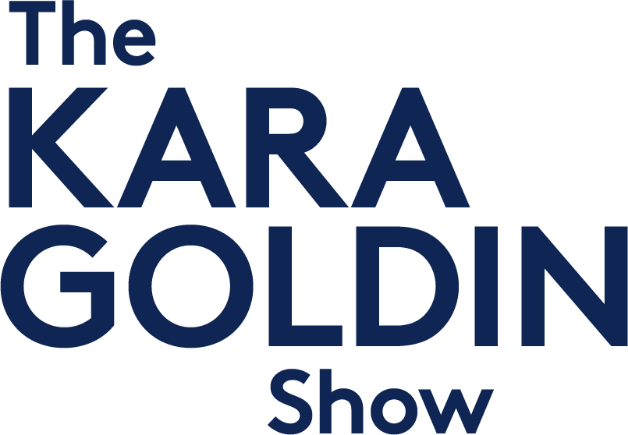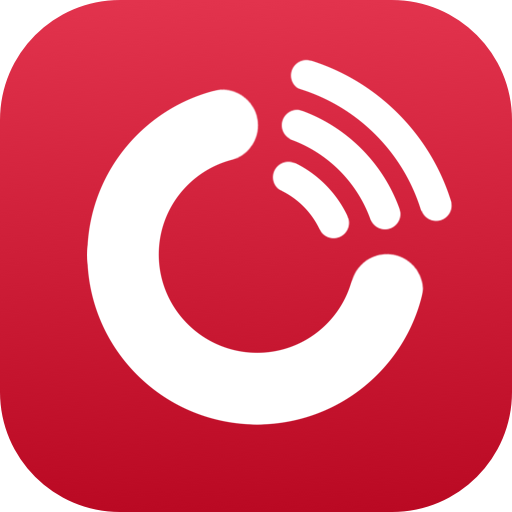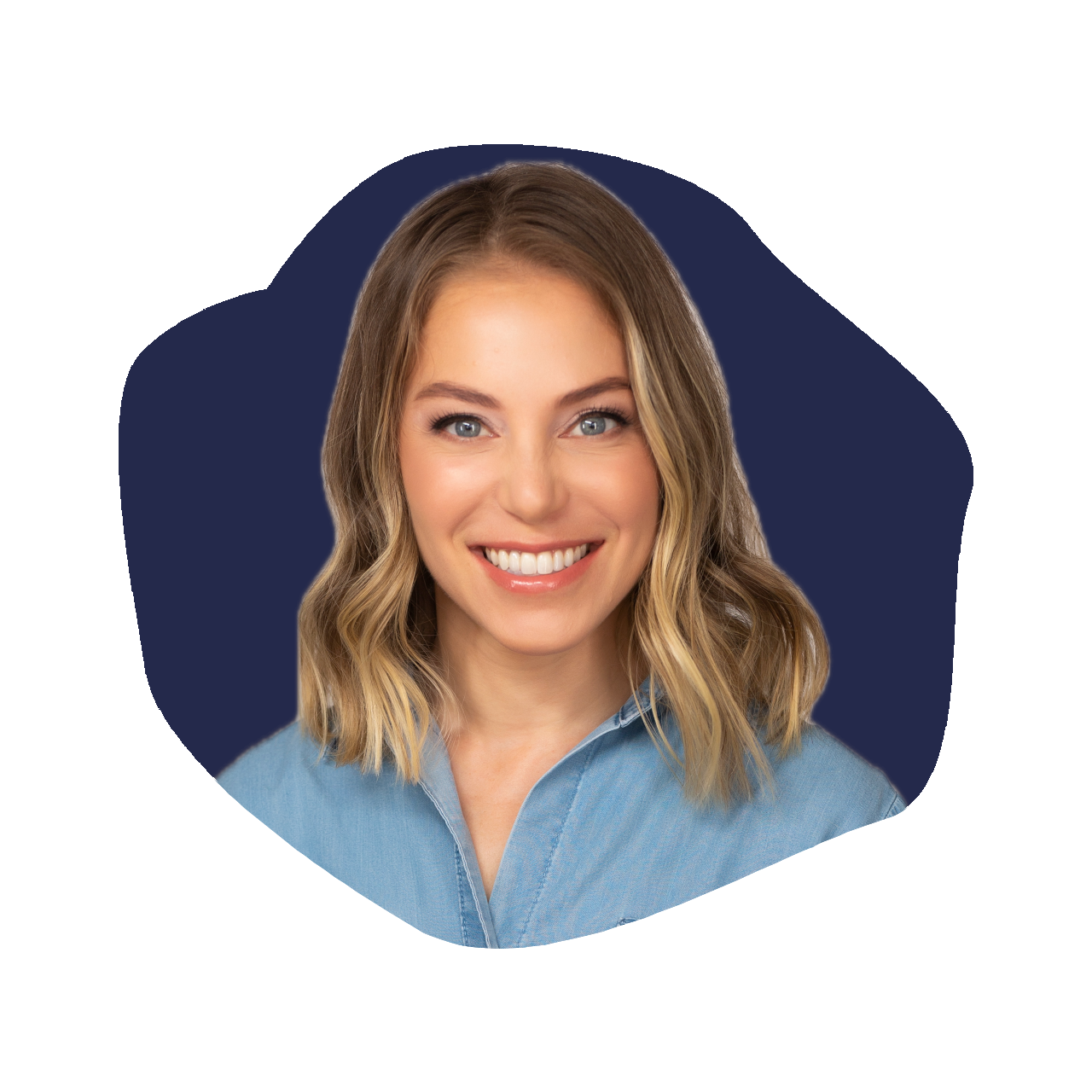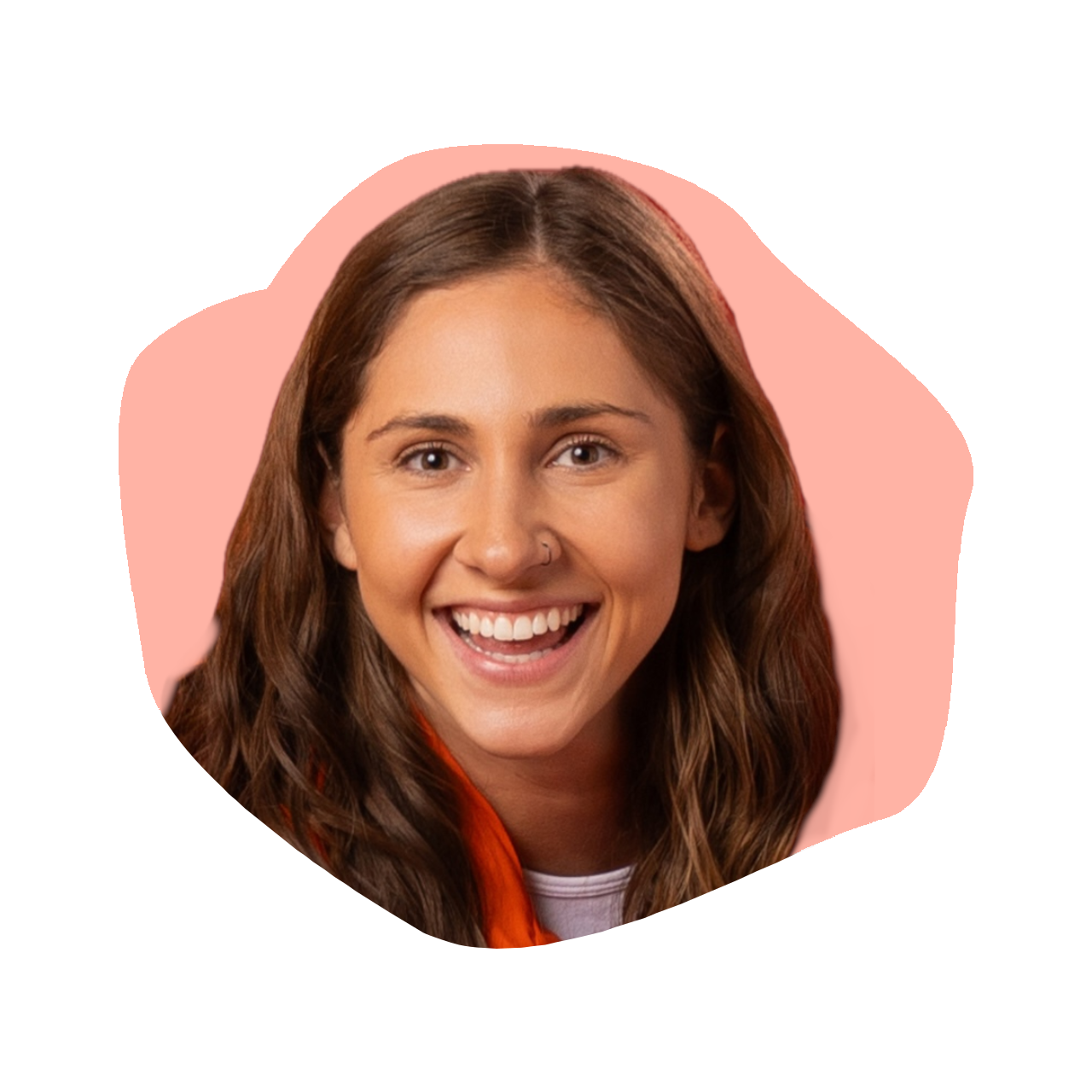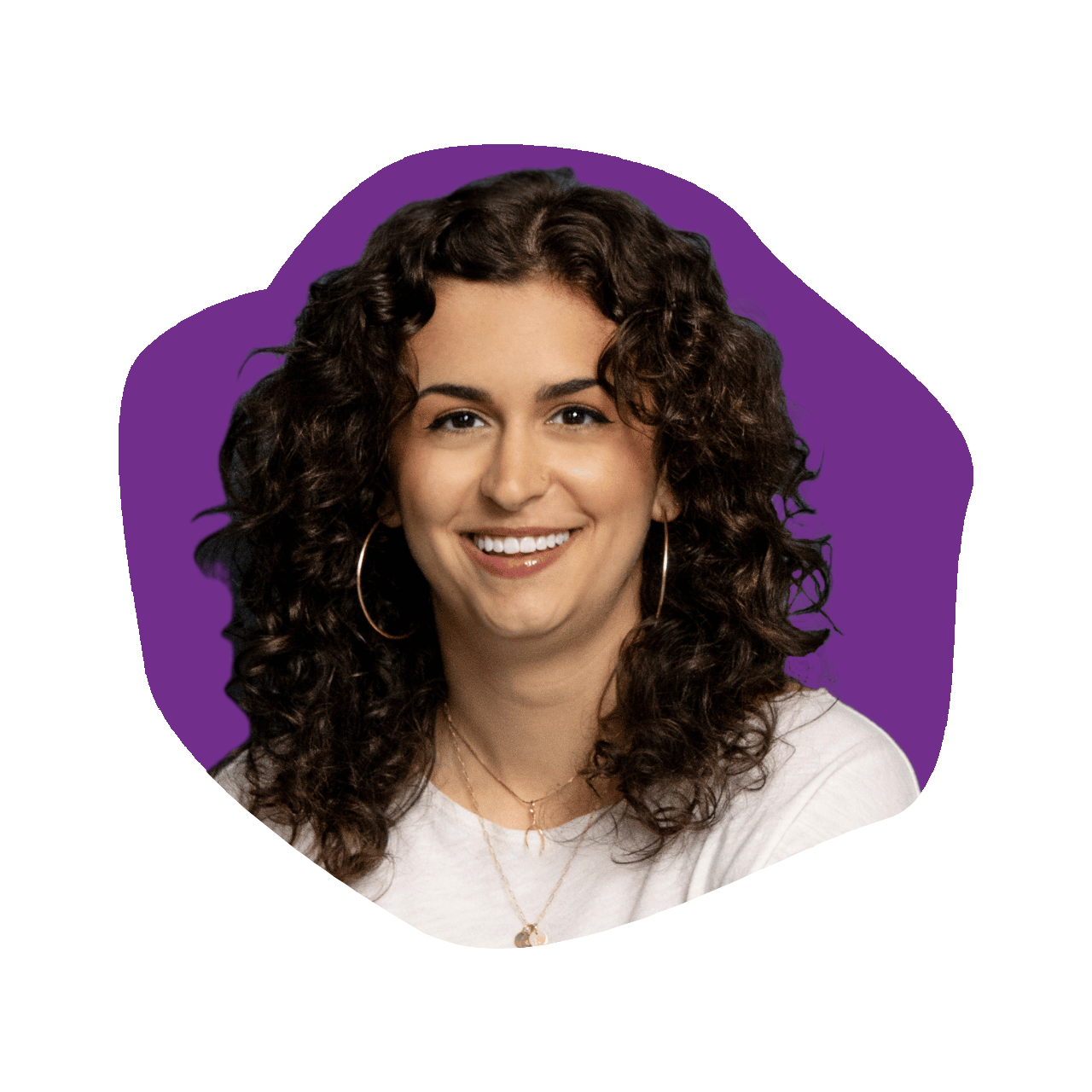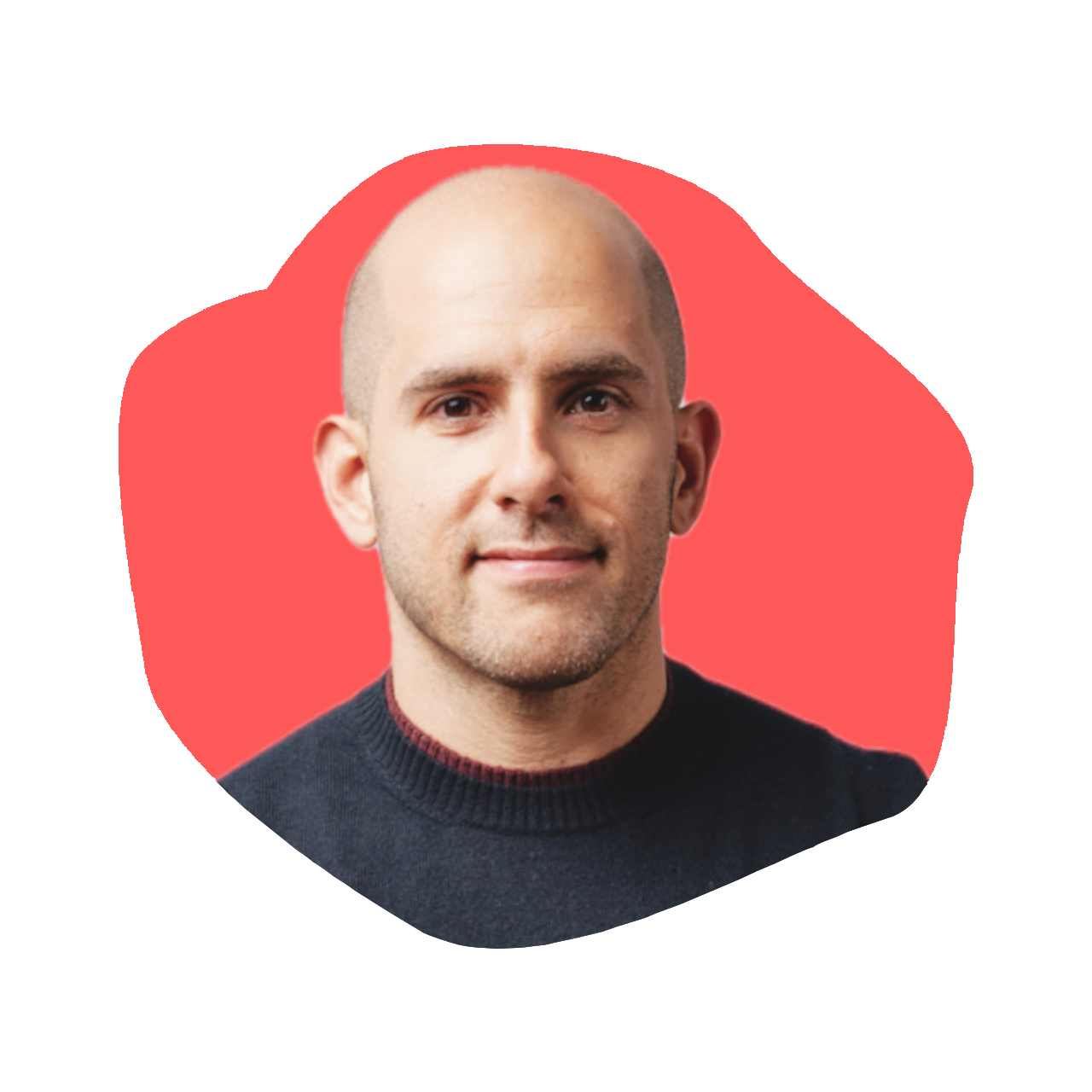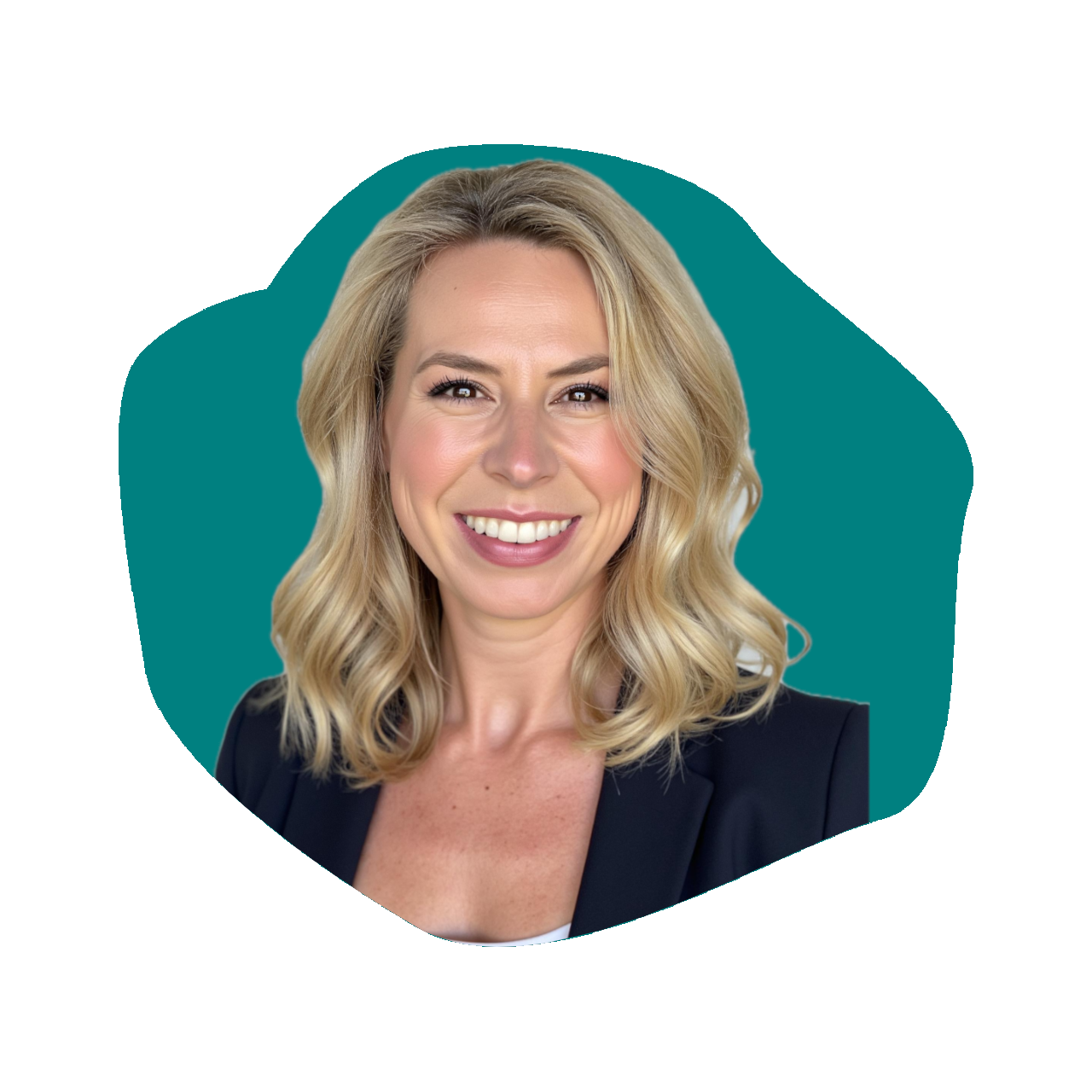Courtney Claghorn: Founder of SUGARED + BRONZED
Episode 679
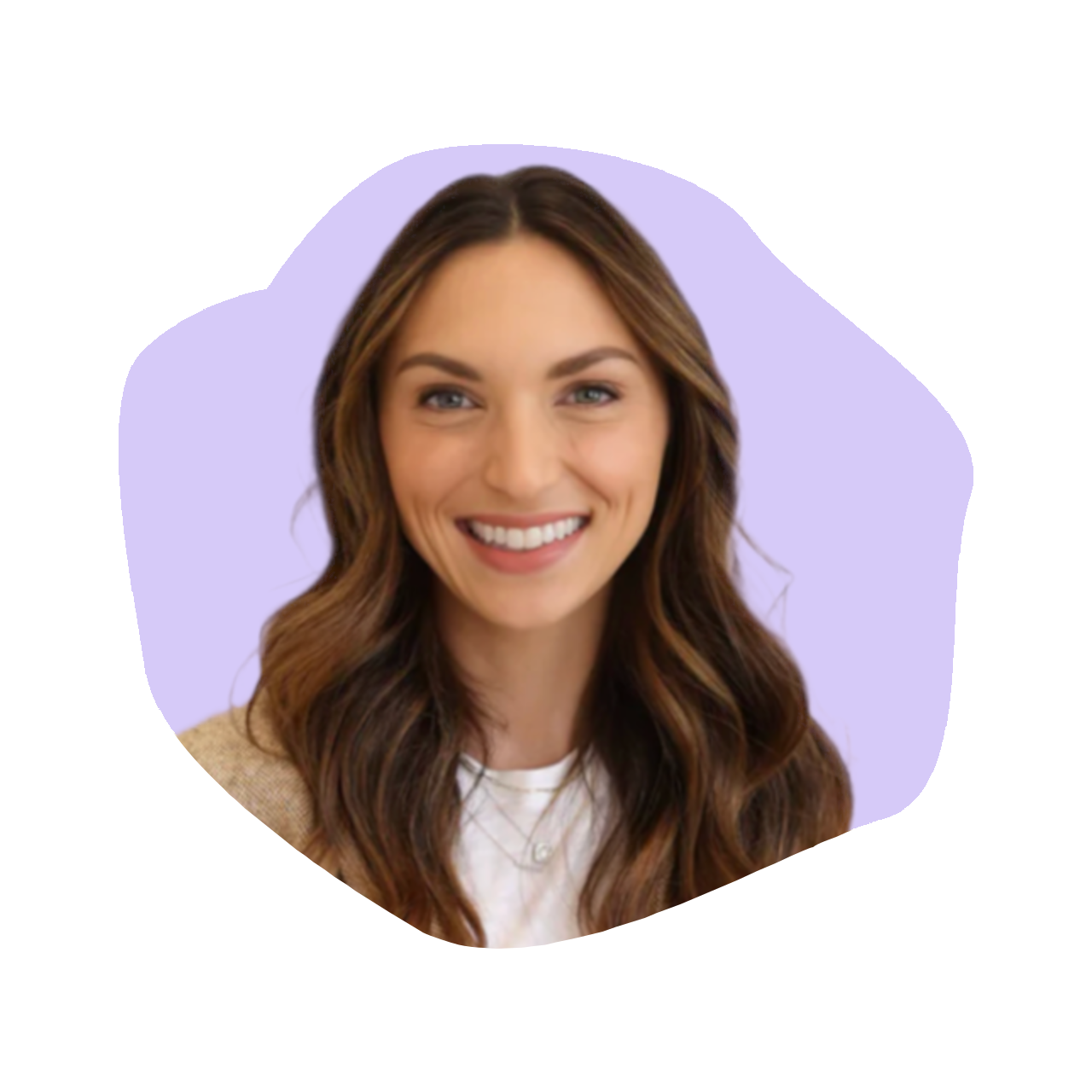
On this episode of The Kara Goldin Show, we’re joined by Courtney Claghorn, Founder of SUGARED + BRONZED—the nation’s premier destination for expert sugaring hair removal and custom sunless tanning. What started in 2010 as a bootstrapped side project has grown into a category-defining brand that’s changing how we think about beauty services—making them more natural, consistent, and luxurious.
During our conversation, Courtney shares what led her to create SUGARED + BRONZED, how she turned a gap in the market into a thriving business, and the mindset it takes to scale without losing the soul of the brand. We explore the early challenges of bootstrapping, the strategy behind building a strong service-based brand, and the delicate balance between creative integrity and growth.
Whether you're a beauty industry founder or someone looking to build a standout brand from scratch, this episode is packed with insights you won’t want to miss. Now on The Kara Goldin Show.
Resources from
this episode:
Enjoying this episode of #TheKaraGoldinShow? Let Kara know by clicking on the links below and sending her a quick shout-out on social!
Follow Kara on LinkedIn – Instagram – X – Facebook – TikTok – YouTube – Threads
Have a question for Kara about one of our episodes? Reach out to Kara directly at [email protected]
To learn more about Courtney Claghorn and SUGARED + BRONZED:
https://www.instagram.com/sugaredandbronzed
https://www.linkedin.com/company/sugared-and-bronzed
https://www.instagram.com/courtneyclaghorn
https://www.linkedin.com/in/courtney-claghorn
https://sugaredandbronzed.com/
Transcript
Kara Goldin 0:00
I am unwilling to give up that I will start over from scratch as many times as it takes to get where I want to be. I want to be you. Just want to make sure you will get knocked down. But just make sure you don’t get knocked out, knocked out. So your only choice should be go focus on what you can control. Control. Hi everyone, and welcome to the Kara Goldin show. Join me each week for inspiring conversations with some of the world’s greatest leaders. We’ll talk with founders, entrepreneurs, CEOs and really, some of the most interesting people of our time. Can’t wait to get started. Let’s go. Let’s go. Hi everyone. Welcome back to the Kara Goldin show. Super, super excited to have our next guest. Here we have Courtney Claghorn, who is the founder of sugared and bronze. I’m so excited to speak with her about how she is building out the nation’s largest sugaring and sunless tanning destination as we’re getting ready, I guess for for summer, this is more and more top of mind for people. Courtney saw a white space in the beauty industry premium hair removal and tanning services that were luxurious, consistent and accessible, and she decided I’m going to go and do this with her husband as a co founder. What started as a passion project has become a booming business, now recognized nationally for its all natural sugaring techniques and custom hand sprayed tanning solutions. And since launching in 2010 she’s built an incredible brand that’s really redefining the beauty services industry. So I can’t wait to dive in to her story. And how do you launch something as incredible as SUGARED & BRONZED, but also, how do you scale it things that she’s learned along the way, challenges, exciting things all of those that are making the journey even that much more successful. So welcome Courtney. Thank you for having me super, super, super excited. So let’s kick it off. What is sugared and bronzed as a brand? And how do you describe it to people who have not experienced the brand overall.
Courtney Claghorn 2:21
Yeah. Well, sugaring is an ancient form of hair removal. It’s from ancient Egypt, so it’s removing the hair in a lot more gentle, less abrasive way. It’s all natural, just sugar, lemon and water, and it removes hair in the natural direction of the growth. Instead of shaving and waxing, would remove hair in the opposite direction of the growth. So that’s why it’s more effective, but also less abrasive. So that’s the sugaring portion. And then the bronze portion is sunless tanning. I mean, in our stores, it’s getting a spray tan, like you mentioned, by hand. All done. Some people call it airbrush. Some people say spray tan. You know, tomato, tomato. And then, you know, there’s also an extension of the sunless tanning in our product line as well. And our product line also exceeds just sunless tanning. It’s really just things that support both sugaring and sunless tanning, prep and maintenance for both services. Whether you’re, you know, coming into one of our stores, or you’re building a tan at home, doesn’t really matter. You really need to exfoliate and then moisturize for both sugaring and tanning regularly to really get the most bang for your buck, to prevent ingrown hair, to make sure your tan lasts the longest. So, you know, that’s what sugared in bronze does as a brand to me. We currently have 36 locations with many more in the pipeline. And, you know, exploding product, way
Kara Goldin 3:40
I love it. So take us back to 2010 what inspired you to start the brand, and what gap Did you really see in the market that you felt like you could solve?
Courtney Claghorn 3:53
Yeah, I mean, I was so young. I had graduated college the year before, and I had a corporate job at a FinTech company. You know, I was just lucky, honestly, to have a job at that time, especially being a wreath in college graduate, you know, I have a lot of friends that didn’t. And I, you know, that summer, I was just sort of trying to get some spray tan for, you know, whatever vacations I had. I think I was like a bridesmaid of grand bachelorette party. I was going on a family vacation, and I was probably the paylist I had ever been, because up until that point, you know, my summers, at least, I was like, you know, out and about. And this was the first summer I really spent, like, entirely in an office, you know. So I was just complaining to my then boyfriend, now husband, about how expensive spray tans were in LA how it just didn’t make any sense. I mean, there was one on Montana Ave where we were Santa Monica store is still today, and where we opened our first store, that was like $115 and we’re talking 2010 so, like, adjust that for inflation, and that’s a really expensive spray tan. It’s not like it lasted for a year. It was like the same amount of time that you know most. Tans less. So I was like, I just don’t understand this that, you know, when we went to school in Boulder, i There were quite a few options that were reasonable price. And like, I get that the cost of living in LA is more expensive, but it’s not that much more expensive. And so I think at some point he just got sick of my complaining, and was like, you know, why don’t we just start a business? And I was like, You’re crazy. But sure enough, you know, he convinced me, we each put in $500 which I had to think really long and hard about, honestly, just because I had really just saved my first $500 you know, when you’re 23 you’re like, Whoa, cell phone bills and like, you’re like, wait, I anytime I’d made money before, this was kind of just my spending money, you know, like, at least in my situation, it wasn’t like I was I wasn’t paying my bills until I graduated, you know, college. So that was, you know, quite a shock. And I think one thing led to another. We each put in the $500 we built the website. I started doing spray tans out of my apartment, and then, kind of running back and forth to my job. And then probably about three months in around then I quit my job. And then I think my husband quit his job, maybe three, four years later it, you know, it really wasn’t financially able to support the two of us. And also he, he could only do so much in the early days, like he could help me build the website and whatnot, but he couldn’t spray tan and, you know, really be in stores.
Kara Goldin 6:12
So in terms of startup capital, you, you talked about $500 I can’t imagine that. That was it in starting this company. But did you have to buy equipment, all of those things to really get the first store off the ground and and how different, I guess, was that initiative versus what you’re doing today?
Courtney Claghorn 6:35
Yeah. I mean, it was obviously very different. But, I mean, so we’re so the initial, you know, $1,000 from the two of us combined. Was really just like a mobile spray tan machine, you know, a tent we like, partitioned off our dining room in our apartment. It was like extremely humble beginnings, basically as humble as they come. And so, you know, when we started to see that we sort of had a business there, you know, it was like, Okay, I quit my job. And then was like, let’s get it out of the apartment. Because that was never a long term plan. It was like, if, you know, we weren’t just going to sign a lease and quit our jobs, like and take that kind of belief. It just didn’t feel like that responsible. We we didn’t know if we were just crazy for having this idea, you know. But a few months and we started to see, okay, this is growing week over week, you know, if I left my job, at least that support me, if we could, then we started to see okay with the trend that it’s growing out we could support a small commercial rent. So by the time, you know, I think by probably February 2011 so really, just a few months in, because this all started like November 2010 so we’re really not that deep, you know, I had left my job. We were looking for a commercial space. We found one fairly quickly in an area that we wanted to Montana, Ave and Santa Monica, like I mentioned, and it’s a really cute retail Street. It’s very local. The parking is easy. It’s not like, it doesn’t feel like you’re like, going to the mall or anything crazy, but the rents there, for that reason, are quite expensive. We found a spot that was upstairs behind a tree, and we were like, if people can find us upstairs behind a tree, like in our apartment, they’re going to be able to find to be able to find us upstairs behind the tree, and we were next to a nail salon, so we’d have some like, you know, walk by clientele that we never had before, all those things, but, you know, it did require a little bit of construction, and that, you know, we fortunately found a space that didn’t need too, too much to get going, because we didn’t have a lot at that point, I think we spent $8,000 and it was all money that we had already saved from clients that had come in because, you know, this point we’re just reinvesting every dollar. And I mean, for many years, honestly. And we, yeah, we opened the store, and now that’s all we spent, which is so crazy again, still very humble beginnings, better than our apartment, you know, now we’ve spent, I think, upwards of, you know, six and a quarter, you know, we tried to now keep it to half a million or under for a build out. But, yeah, it’s definitely changed. It
Kara Goldin 8:53
changed significantly. So did you mentioned that you had just graduated from college? You didn’t have really experience in building out a business, but you had experience in actually the business that you wanted, right, that you wanted to see. And did your boyfriend now husband have experience with real estate? You talked about picking the right location. All of those things are so key for businesses, and really scary, right? Because if you pick wrong, yeah, I mean, you know that’s, that’s not good either, and it could also taint your view on whether or not this can actually work. So talk to me about sort of those, those those early days, and maybe the experience that you did or didn’t have?
Courtney Claghorn 9:44
Yeah, I mean, my husband will just refer to him as Sam, his name, but it’s probably easier. But yeah, Sam didn’t really have much experience in anything, either. I mean, we had met at school in Boulder. We were the same age. He was at his first job, you know. So we were both. You know, it’s like the blind leading the blind. That being said, you know, I think when you know, as in my experience, and other couples that I see that start businesses together often, you know, they seem to have sort of opposite skill sets. Opposites really do attract. So, you know, he had, you know, started an Xbox business, like in high school, like modding Xboxes or something random. So I don’t know of any of that business experience he brought in, but I think he had had the excitement for it, maybe that I hadn’t experienced personally. You know, my my mom had started a business with my stepdad, and my grandmother was had her own little tailoring business, and her grandmother had a dress drop. I had seen entrepreneurship in my family, but in a way that looked really hard, you know. And so maybe he sort of brought that excitement, where he was, like, I had all this cash in high school. It was really sweet, like, and he he knew how to build a website, so that was key. I did not have any experience in that at the time. And I, you know, it’s so funny now, I would just use chat GBT and be like, tell me what I need to do to build a website. Obviously, that was not an option. Then you could Google stuff. But I think it would have been a lot more challenging if I didn’t have that person in my life so and I learned a lot very quickly, and can now build a website myself as well. But yeah, he knew how to do that. And I yeah, I mean, that was really it. We just didn’t have a lot of life experience. I think all we really had was just sort of optimism and, you know, intuition, and we’ve always kind of leaned more on my intuition. I don’t know if it’s just a stronger female thing or whatever, but I knew exactly where I wanted to be in Santa Monica, you know, I didn’t, I didn’t need to look twice. Obviously, it helped that I lived there. Now, real estate decisions, you know, are much more complicated as we open in cities where I have spent far less time. But I think when you live in a city, you often know where you want that business to be. It was just sort of a matter of being able to find a space that we could afford on that street, and thankfully, there was some second floor, hidden retail that made it happen. So
Kara Goldin 11:59
the bronzing side of your business was what came first? At what point did sugaring actually come into play, and was that the original focus on what this company would be, or did you eventually just come up with the sugaring side of the business? So
Courtney Claghorn 12:17
yes, Canning was the the first part I, you know, I wasn’t a licensed esthetician. I’m still not. So sugaring wasn’t even a thought, quite honestly, and spray tanning, unfortunately, it doesn’t require a license, so I was able to just learn and kind of do it. But yeah, it was like a lot of people were coming in and saying, I just came in from my waxing appointment. I just came in for my sugaring appointment where, like, this is so funny, like, I guess that makes a lot of sense. But like, they’re going on vacations, they’re just kind of, like, hitting all their beauty errands in one day. And it was, like, we kind of laughed, like they’re getting naked at one place and then coming over here and getting naked again. We’re like, what if it was just in one spot? But we didn’t really, you know, think too much of it, until we really started to look for that first location in Santa Monica, and then we ended up renting the back of it to someone who did sugaring. And we really got to see firsthand just so much synergy there. Unfortunately, she didn’t really want to grow and expand like we did, and so, you know, sugaring didn’t come till much later, because it was like we were hoping. Then locations without sugaring, we were trying to rent to someone else who did sugaring in different areas, because, again, she wasn’t looking to, like, go nationwide or anything like that. And then at some point, you know, it just, it just made sense to, like, open these future locations with sugaring ourselves, and, you know, then start to bring it into the other locations where we didn’t have it. And it took kind of a wild play and catch up, as we did add sugar into the business.
Kara Goldin 13:38
How long before you added that it
Courtney Claghorn 13:42
might have been four or five years until you were opening locations with it. I, you know, I need to look at like our company timeline. It’s like, it’s just all been so long now, maybe less, maybe four years. Yeah, I don’t know. And
Kara Goldin 13:54
the reason I asked too, is I feel like so often people think like they have to have it all figured out before they actually go and get launched. And we hear these stories all along where, you know, today you’re known for SUGARED & BRONZED, but it didn’t start that way. No, it’s just bronze. Yeah, it was just, it was just bronze. So what do you wish people knew about the tanning industry? I mean, at times, tanning can get a bad rap, and you guys are different, but I’d love for you to just really talk about how you’ve redefined that experience for consumers.
Courtney Claghorn 14:30
Yeah. I mean, I think we’ve all seen the Friends episode where Ross goes in and gets his spray tan and like, doesn’t turn around. And funny enough, one of my best friends from high school, who now is our VP of real estate, did that in high school. Right after the episode aired, it was like, didn’t you get the memo? Like, like, the show was, like, on prime time at the it was just so funny. So that really does happen to people, or it did at least, and obviously we’re very different than that in the sense of, like, I think a. Lot of those places with the machine hands, so many things could go wrong, right? Like, you could not turn around. You could have it. I remember getting one where it was, like, sprayed so much on me, and I didn’t, I didn’t know you could, like, blot it off, and then it would end up looking okay. And, like, I just had, like, these streaks of, like, extra tan. You know, I think people talk about streaky so much, whereas, like, that just doesn’t really exist anymore, you know. So doing it by hand really minimizes any of the errors, you know, obviously, and the training that we put into, you know, all of our our spray you know, our sprayers, they learn so much so that you’re not kind of going in blind to this, like machine situation. Obviously, you know, the products have evolved so much over the the years of just getting better and better. I think people in the 90s were like, it’s so orangey, you know, it’s like, or, and people, people would do it at home themselves, like that stuff would like, either look orange or smell funny, like, it kind of got a bad rap. But also, I think that in the early days, they were all sort of in tanning bed, places where you could go get these, like UV ray places where it just felt like there’s like neon lights and like posters of like oiled up people and just a totally different vibe. You know, we’re like, look, this is a healthy alternative to laying in the sun. Like you don’t need to come in and feel like it’s a sketchy place. This is somewhere where you’re probably getting naked, honestly, and you just need to feel comfortable. You need to feel well taken care of. You don’t need to feel like this is like a grimy place like so we just wanted it to be a totally different vibe and esthetic. And you know, hopefully that’s what we we’ve created in our stores. It has sort of a Mediterranean feel. We have this, like gray Malin art that’s different in every location. We just have a lot of cool textures and tiles. Like, if you’ve ever been to the south of France or, you know, somewhere in southern Italy, like, hopefully it’s reminiscent of that. So it’s just very, very far from a 90s sort of tanning bed vibe. How
Kara Goldin 16:58
do you think about you’ve now have over 30 locations. How do you think about growing? Because obviously, you know you’ve got to have success in your existing markets. But what what prompts you to go and launch a new location? And you know, how do you get the courage to do it, I guess, without screwing up the rest of of what you’ve built?
Courtney Claghorn 17:24
Yeah, I mean, it was scary early days, like every time before we finally decided to have kind of a panic attack of like, Oh, should we be doing this? Are we overextending ourselves? Um, you know, now it’s, it’s just much more normal. It’s just like, it’s, it’s, it’s really its own division of the business, you know, at this point. So, you know, if we stop signing leases, it’s like, what would that team be doing? So it just feels like, you know, just as much as operations or marketing is part of the business, so is real estate, so is design and development, and everyone’s just, you know, as much as we’re working on our day to day ops, we’re also working on what’s coming down the pipeline. So at this point, we’re really focusing on signing one lease per month. So that’s just kind of how we think about it and how we make it happen. Now, obviously a lot goes into that, like, where are we signing that lease? You know, there’s infinite possibilities. Obviously, we need to kind of look at the fine line of spreading ourselves too thin and then also opening a new market so that we’re not only in one market. Also we’re not over extending ourselves in one market, but it’s obviously a balance, like if we open 10 in New York City, you know, the hiring pool might feel really challenging because we just are only hiring in New York City. But then also, we open in every city across the country, our ops team is really stretched thin. Are they flying everywhere? We don’t really have that, you know, boots on the ground, you know, team there yet. So that would also be crazy. So it’s kind of a balance of in filling our current markets, and then also, you know, planting flags in new markets. So coming up here, the last new market we opened was San Diego, which was really just kind of like an extension market that we call it, you know, because we already had LA and Orange County, and then, like the last new market was Miami, that, which was really a flag plant. And then coming up here, we’re, we’re going to be opening Georgetown and DC, which will be a new, you know, entirely new market, which is really exciting, but, you know, it’s really hard to decide which one would even come after that. There’s just, we’re leaning towards Chicago, but we had a lot of internal debate, honestly, what
Kara Goldin 19:23
has been the hardest market to open and why?
Courtney Claghorn 19:27
Oh, hardest Gosh. You know, I think in some ways it was Orange County. It was like we have more competition there than we do anywhere else, which is wild, like we had so much less competition opening New York City. That was hard in its own way, because, you know, Rachel, who works with us, our VP of ops, she moved up there to really open New York. And I’m, you know, went out there for six weeks or whatever. So it was like we visit. Had to do a lot because we didn’t. We hadn’t raised money at that point. You know, we were still bootstrapping. That was hard in its own way. But like New York, we opened, it was just like we’re so busy. Orange County was, was just a bit more challenging. It was, it’s a little bit less dense. Again, I think just having a lot of competition. Yeah, they all have their own kind of challenges, but they’ve all also gone, you know, pretty well. We’ve never, we’ve never closed this
Kara Goldin 20:24
story. That’s, that’s amazing. I had Candace Nelson on, who founded sprinkles, and she talked about Arizona like she, you know, launched in Arizona, and just thought, Okay, it’s just another location, and she just really hadn’t taken into account, like, the heat and how that would impact, like, you know, how things are baked and very different. So obviously, you’re not baking people, but, but it’s, you know, it’s, it’s interesting how it’s not just about being on the right location and corner and visibility. There’s aspects internally. It may be the hiring is, is harder, easier, all of those things. And I think people don’t necessarily think about that, especially when they’re hopping into entrepreneurship and building out a company. But what’s one myth about entrepreneurship that you feel needs to be broken, especially in in the, you know, space that you’re in. I mean,
Courtney Claghorn 21:29
I think you honestly kind of touched on it, that you the idea that you need to have it all figured out. I’m like, In what world like that just doesn’t make any sense. I mean, it’s like trying to figure out, like, before you have a child, do you have it all figured out? Like, you know, I certainly didn’t. I’m still figuring it out, but I think that it’s like, yeah, you can, you can do some basic planning, but you’re, you’re not really gonna know until you go live it. And so I do, I see that honestly, with some of the smartest people trying to start a business. It’s almost like this, the smartest you are, the the more of a hindrance it is at times around the more educated you are. You know, it’s like, you think you need this, like, playbook and all these things, and it’s like, yeah, that’s all gonna change. So you can plan a little bit, but you have to be willing to pivot really quickly. It just like no one expected the pandemic. Like, how were you supposed to plan for that? You just can’t plan for everything. You can plan for very little. It’s like you can make these plans, but you just have to be very, very flexible.
Kara Goldin 22:32
I think, yeah, definitely. I think flexibility is is key, and just a willingness to kind of take on whatever is coming in front of you, right and pivot, or, if you don’t like that term, go a different direction, or whatever it is.
Courtney Claghorn 22:49
When we were looking at real estate that it was just it was like, always too everything we looked at was too large for us. When we were only doing tanning, and that’s kind of when it was like, Okay, we either need to rent it out to someone who wants to do sugaring half the space or an extra room or whatever, or we need to add a service to our business. And it was like, because this real estate problem just kept coming up, and we didn’t want to have all these sub leases all over the place. You know, when you have one location or two, that’s like, Fine, you can manage these, like, sub lease is sharing sort of a lobby or whatnot. But that’s not really a way to scale a big business. It was like, Okay, well, this needs to be under the same umbrella of our company, and how are we going to do that? And that solved our real estate problem, but it also brought so much to the business, like tanning is much more seasonal than sugaring. Like, again, there’s just this synergy. There’s this, I think awareness of the brand, because some people sugar and don’t tan and vice versa. But then think about how many more people, even though they might be in the same core demo, so to speak. You know, people have their different preferences for for many different reasons. But then that whole core demo has more awareness of SUGARED & BRONZED despite the fact that they might not tan, or someone might not sugar, yeah,
Kara Goldin 24:02
no, I that’s really, really interesting. So you decided to launch an entire line of products. You touched on on those. How did that decision come about? Because not everybody launches. I mean, you have a pretty robust line of products as well. So what sort of helped you make that decision to go ahead and go do that?
Courtney Claghorn 24:26
So I think a lot of it has to do with the fact that with both sugaring and tanning, you need to really exfoliate, hydrate your skin, moisturize, to do all these things in between services. And obviously, initially we didn’t have any product offering. But, you know, people were always asking, well, where, what kind of exfoliator do you recommend? What kind of lotion do you recommend? What do you how do what? Where do I, you know, buy this moisturizer? And it was like, it felt weird being like, oh, go to Target or go to Amazon. Like it felt like we should have those things in stores. Like, this is the one we recommend. But for so long, you know, we. Strapped for nine years, and then we raised money in late 2019 and then shortly thereafter was the pandemic, and we were just closed for pretty much a year. So then we really had to rebuild. So for so long, we could really only focus on our core business for, like, all those reasons, and so when we did start to introduce products. I don’t know what year it was before we raised money, but they were just, they were just private label products. I wasn’t particularly proud of the packaging. I think I probably did most of it myself. I am not a graphic designer. Like, that’s sad that I did that. But that’s, that was the option we had, you know. But it was like, Okay, I liked these private label products. And I, you know, wanted something, and that’s just, that’s all I had. So that was, you know, kind of how product was for quite a while. Then more recently, really, in the past couple years, we were like, Okay, we finally are past the pandemic. We’re in growth mode. We have this amazing infrastructure now, this corporate team that’s so awesome. And the capital, you know, we’re not bleeding money like we were back in 2021 22 whatever. And so we can really focus on product now. So we don’t want any more private label. We want it all custom formulations. We want beautiful packaging, you know. But ad obviously takes time. So we’re at the point now where we relaunched, I think just about half, or more than half the line with our own formulations, and then the rest are coming out in the coming months. So it really took a lot, I mean, and this coming November will be our 15 years from the day we started in the apartment. So this was a really a long time in the making, mostly just because we didn’t want to take our eye off the ball in terms of our core business for all the things I was talking about, bootstrapping, pandemic, whatever. So we really waited until the time was right to say, Okay, we’re going to focus on this. Because when we do something, you know, we want it to be wholeheartedly and 100% and it just felt like, until now, we didn’t have that capability. So just, you know, private label, having something there that we liked but wasn’t necessarily ours was, was just the option until recently, well,
Kara Goldin 27:07
and also now you’ve got another revenue stream, right? So Should another time come along where you have to close we hope, I think everyone hopes that, but it’s something that probably good that came out of the pandemic. So I think it’s, it’s and the products are excellent. You’ve done such a great job formulating them as well. So finally, what do you hope SUGARED & BRONZED becomes in the next I don’t know, couple years, five years. I don’t know how you look at it, but what, what is sort of, you hope for, for this brand?
Courtney Claghorn 27:45
Yeah, I mean, I think we’re really on the precipice of becoming a national brand, which is really exciting. You know, I think that in the cities that we’re in, there’s a lot of awareness, especially in the cities that we have multiple locations, and I really hope that we have that sort of awareness level across the US and and that the cities that we’re not in yet, or just, you know, regions in general, that there’s sort of an excitement and an anticipation for us to open before we even get there, which I’ve sort of started to see in DC, which is really exciting, like every We were doing a real estate tour, and like every broker that was sort of in our core demo, was like, Oh, we’re so excited for you guys to come. And I was like, that’s really fun, because I usually only see that on real estate tours in cities that we already exist. So I really am excited for us to become this national brand, both physically and then also in the product space, and then beyond that. You know, I really do think about international I think that there’s a huge want and need for more sunless tanning spots. And also, I think with that comes people who enjoy sugaring in the UK and Australia. So those are top of mind for me. And you know, we’ll see. We’ll see where that goes. Joey, the CEO of berries, is on our board, and I think what they’ve done in terms of international expansion is really amazing. So he’s he’s kind of a great mentor for that. So we’ll see what comes next. That’s
Kara Goldin 29:12
awesome. So Courtney, thanks so much for sharing all about the brand and your journey and what you’ve built with SUGARED & BRONZED, and good luck with everything you’ve done an incredible job to date, and I know it’s just going to be bigger and better. So thank you again, and thanks everybody for listening. Have a great rest of the week. Thank you. Thanks again for listening to the Kara Goldin show. If you would please give us a review and feel free to share this podcast with others who would benefit. And of course, feel free to subscribe so you don’t miss a single episode of our podcast. Just a reminder that I can be found on all platforms. At Kara Goldin, I would love to hear from you too. So feel free to DM me, and if you want to hear more about my journey, I hope you will. A listen or pick up a copy of my Wall Street Journal, best selling book, undaunted, where I share more about my journey, including founding and building. Hint, we are here every Monday, Wednesday and Friday. Thanks for listening and goodbye for now. You.
